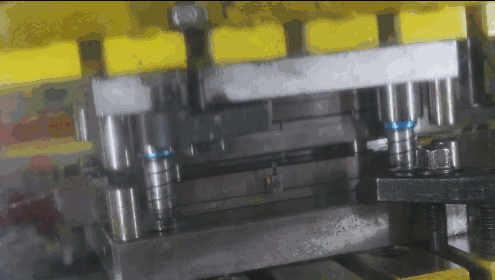Application of High Speed Press Technology

Therefore, in mass production and super mass production, ordinary press machines can no longer meet production and technical requirements. The use of high-speed precision presses for high speed, automation and continuous stamping is an effective way to increase stamping productivity. Because the stroke speed per minute of a high-speed precision press is more than five times higher than that of a similar tonnage press, the high-speed precision press not only has a high stamping accuracy, the surface quality is good, and the die has a long service life.
In recent years, stamping technology continues to develop in the direction of high speed, precision and intelligence. The development momentum of high-speed press machines has been promoted. As a result, many high-speed precision press machines and ultra-high-speed precision press machines have emerged. Such as the German Rust Company, the United States Münster Company, the Swiss Bruder Company, the German Schuler Company, Japan Energy Efficiency Electric Company, etc. developed small tonnage high-speed precision press machines, The number of slider strokes can reach 2,000 strokes/minute, 3,000 strokes/minute, and 4,000 strokes/minute, respectively. In the load state, it can also achieve the special grade precision requirements in its standard. This signifies that the high-speed precision press machines technology has developed into an ultra-high-speed and ultra-precise technology stage.
Some foreign companies have divided four speed grades according to the number of slider strokes for high-speed precision presses with small tonnage: Normal speed ≦ 250 times / minute, second high speed> 250 ~ 400 times / minute, high speed> 400 ~ 1,000 times / minute, high speed ≧ 1,000 times / minute. Large-tonnage high-speed precision press slider stroke is relatively low, such as 300 tons of large-scale high-speed precision press, the slider stroke range is only 160 ~ 400 times / minute or so, 100 tons of fins dedicated high-speed precision presses, slider range is generally 150 ~ 250 times / minute or so.
Due to the press speed, press tonnage, length and number of slide strokes, product process structure and material process performance, the speed and accuracy of automatic feeding vary, and many factors change. It is difficult to use simple numbers as the boundaries for dividing each level. Therefore, at present, there is still no clear definition of the scope of rapid change of high-speed precision presses in the world. Generally speaking, the stamping speed is 5 to 10 times higher than that of ordinary presses and is collectively referred to as high-speed precision stamping.
From the perspective of the application of high-speed precision presses by most Chinese companies, the average of the minimum and maximum strokes of the slide speed is greater than the average speed of 10 to 20%. It is a more reasonable and reference standard. Because the highest stroke number of the high-speed precision press slider generally refers to the number of no-load strokes. When the number of strokes reaches a certain value, the unbalanced phenomenon of the press during operation increases significantly, and the dynamic change of the bottom dead point of the slider is also large. In this way, it is necessary to solve a series of technical problems such as coil quality, feeding speed, mold performance and life, equipment strength, rigidity and precision, automatic monitoring and stability of failure, vibration and noise, and lubrication and cooling systems. Therefore, the speed of punching in high-speed precision press applications is quite critical.





